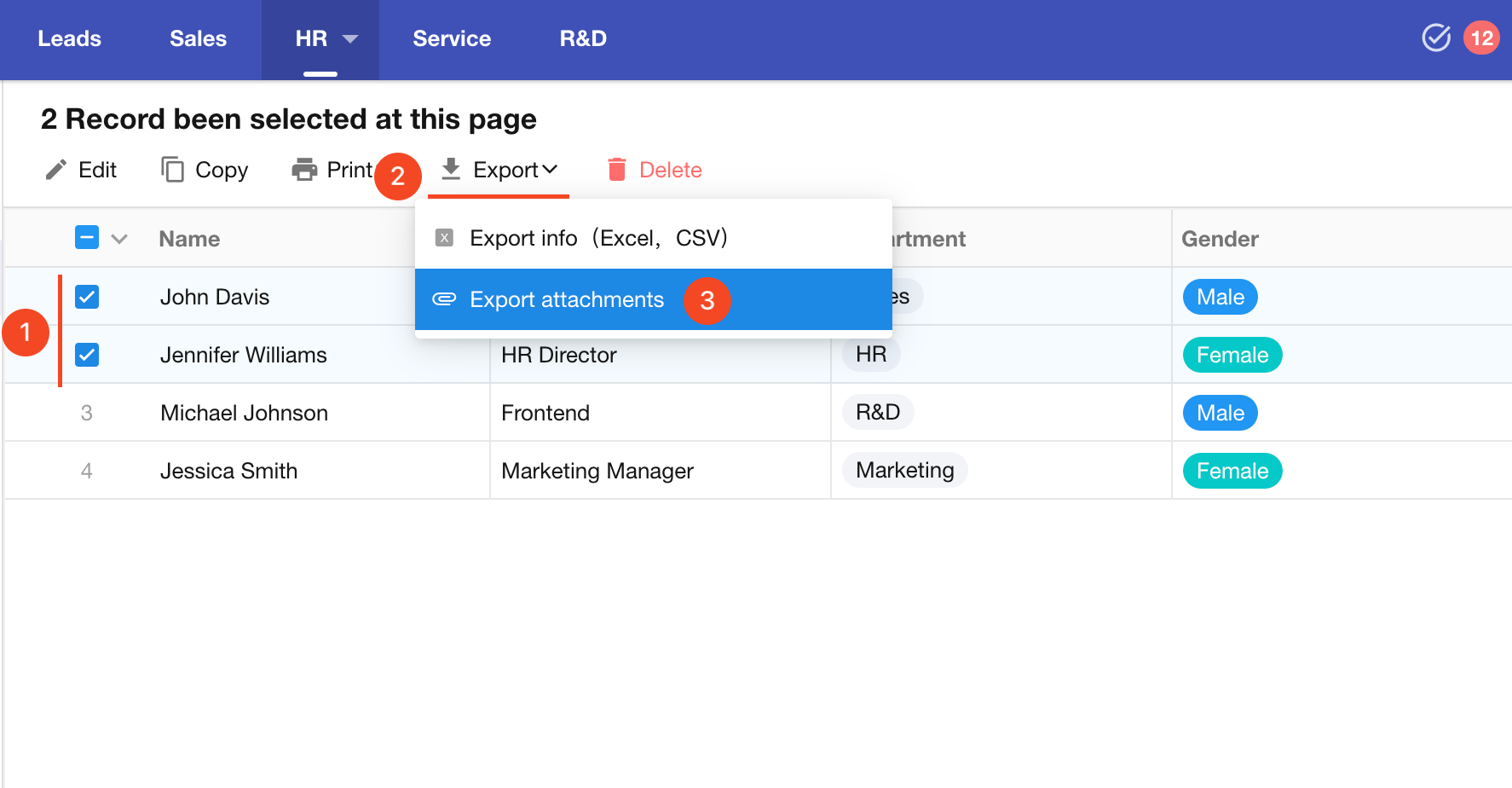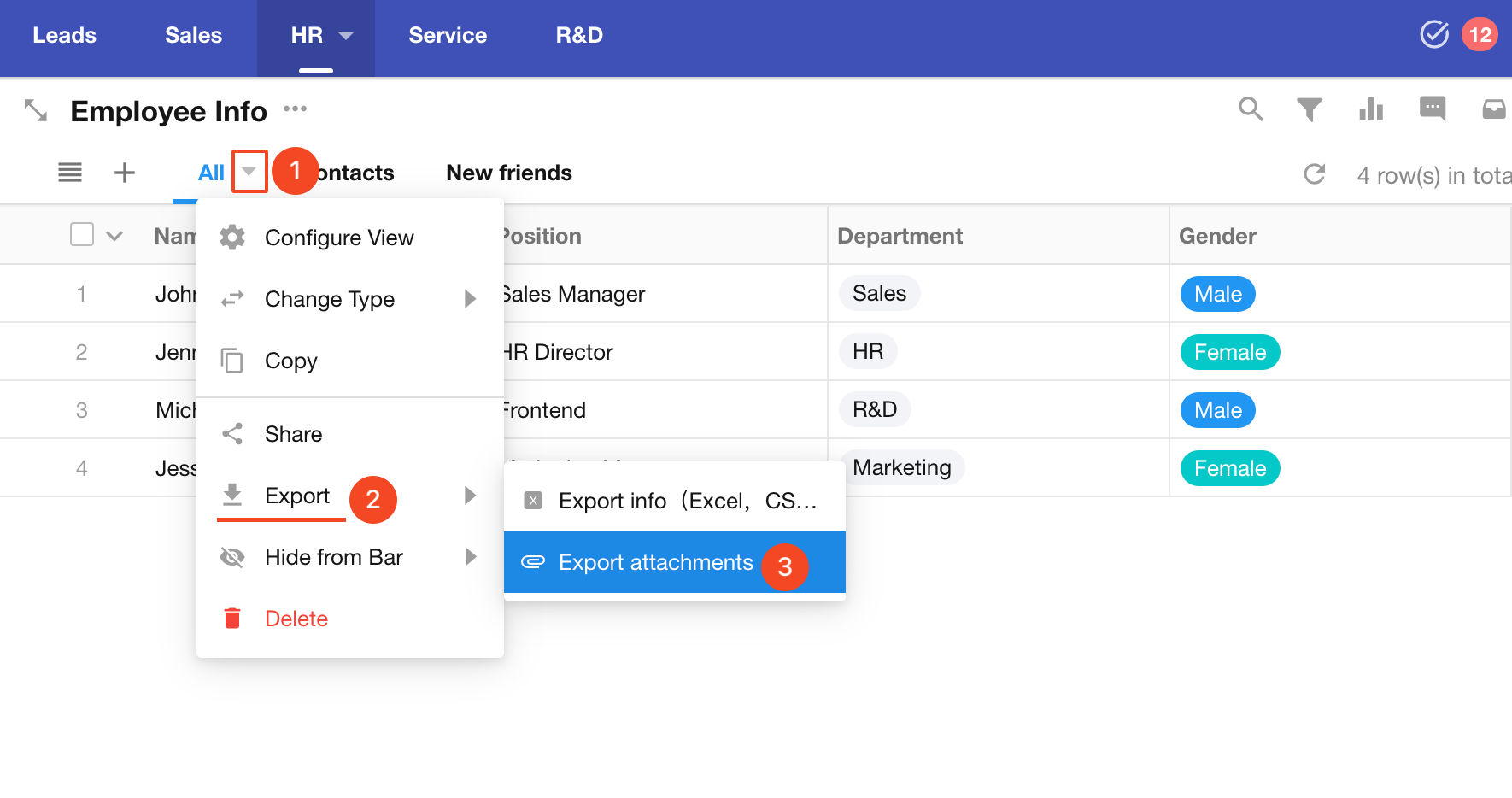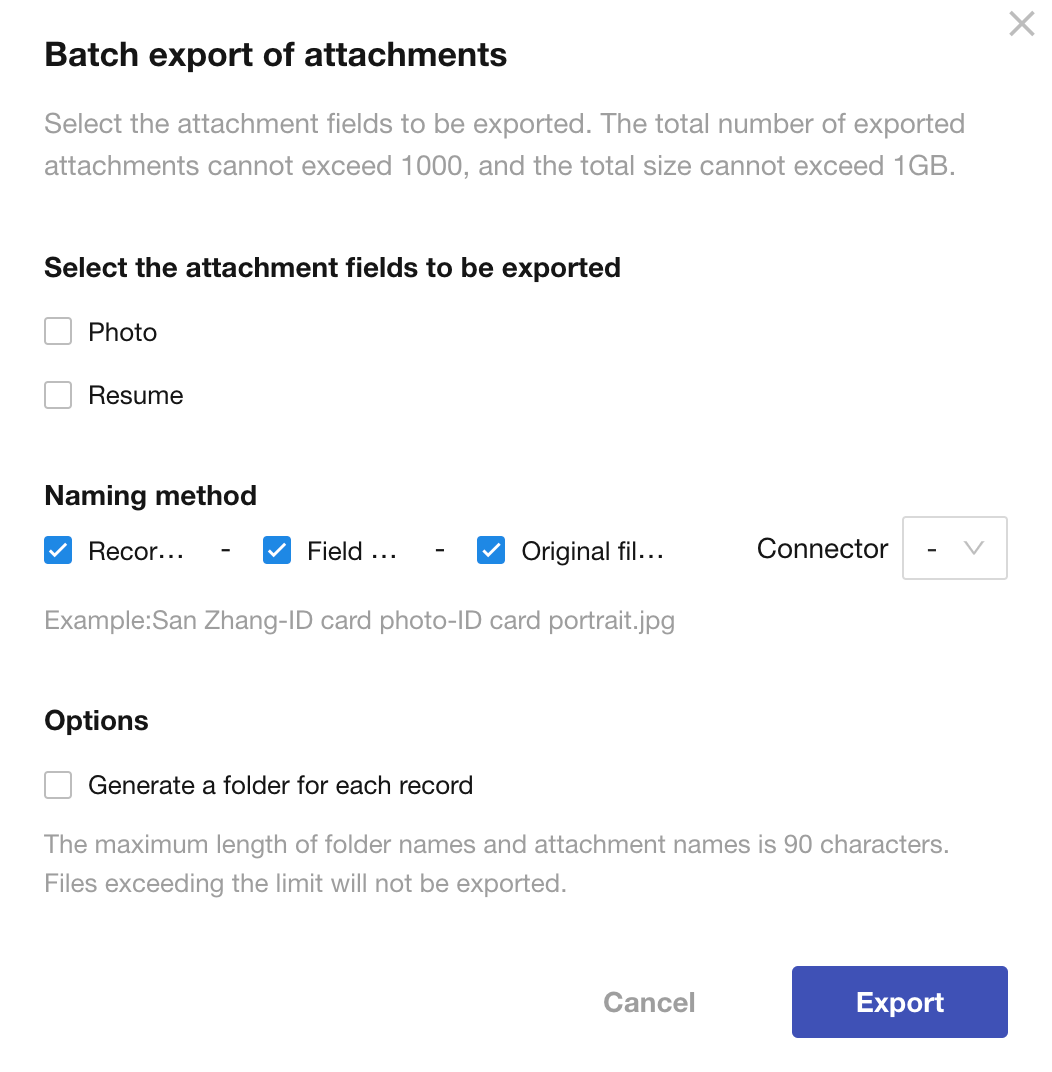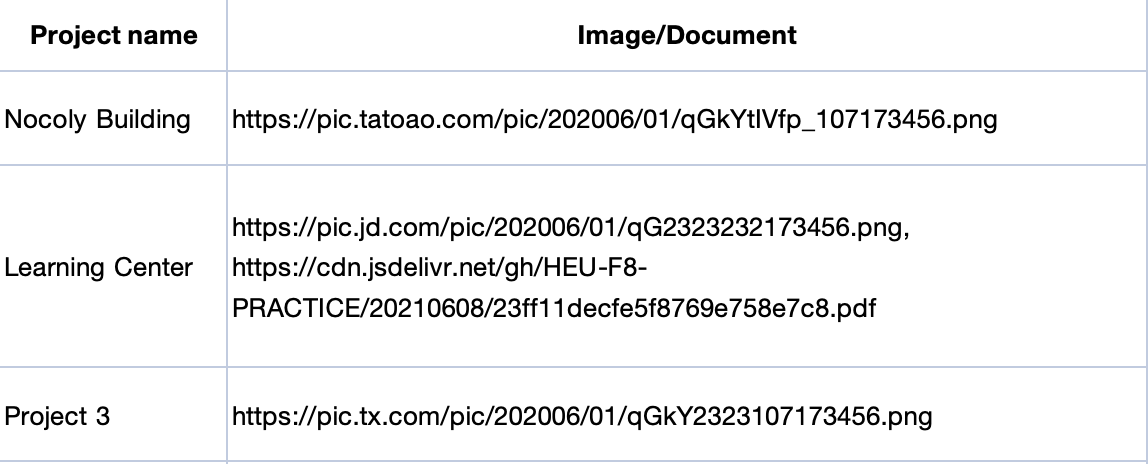Exporting and Importing Attachments
In a worksheet, you can batch download attachments or export attachment URLs to Excel.
When importing data via Excel, you can import images or documents into file fields by using their public URLs. The system will automatically download and store the files into the corresponding field. Local files are not supported for direct import.
1. Exporting Attachments
You can batch export files from one or more file fields across multiple records.
This feature is only available in paid editions.
Exporting Attachments
Method 1: Batch select records

Method 2: Export from view

If the "Export Attachments" button is not visible, it means there are no file fields in the records. Attachments displayed via foreign fields also cannot be exported.
Export Settings

-
You can select multiple file fields for export.
-
Naming Convention:
File names can include up to three elements: record title, file field name, and original file name. You can define separators between these elements for clarity.

-
Export into separate folders per record:
For example, exporting profile photos of three employees:
-
One folder per record:

-
All in a single folder:

-
Export Limitations
- Maximum of 1,000 attachments — only the first 1,000 will be exported based on record order.
- Maximum total size of 1 GB — only the first 1 GB will be exported based on record order.
If limits are exceeded, download will fail. You will need to narrow the record range and try again.
2. Importing Attachments
You cannot upload local files directly via Excel. Instead, you must provide publicly accessible links to the files in Excel. The system will download and store the files in the corresponding file field automatically.
Supported Formats in Excel
-
Direct Links
Simply paste the image/document URL(s) into the cell. Use a comma (
,) to separate multiple links for the same file field.File names will default to the name in the URL. For example, the first link below will generate a file named
qGkYtIVfp_107173456.
-
Custom File Name + Link
Use the format:
filename.extension(URL)
Multiple files should be separated by commas.
3. Exporting Attachments to Excel
When exporting worksheet data, attachment fields will also be included. Images/documents will be exported as clickable links.
- In Excel, each link is displayed as:
filename (with extension) + URL. Multiple links are separated by Chinese commas. - The exported links can be re-imported to HAP as new files.
- Export does not check user permissions on viewing or downloading attachments — all links are included.
- Links require HAP login to view (login once is sufficient).
